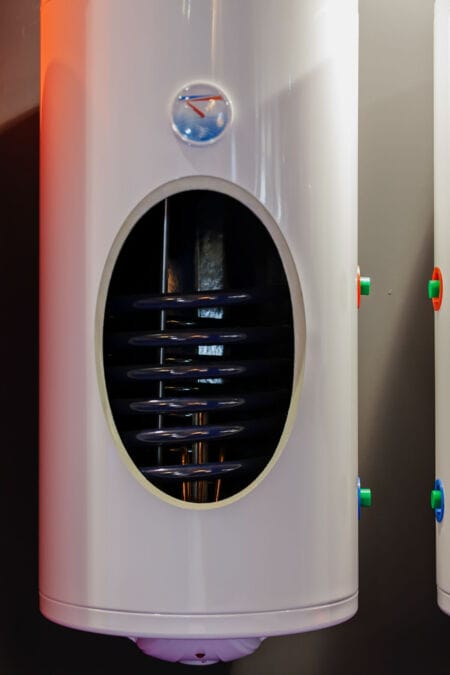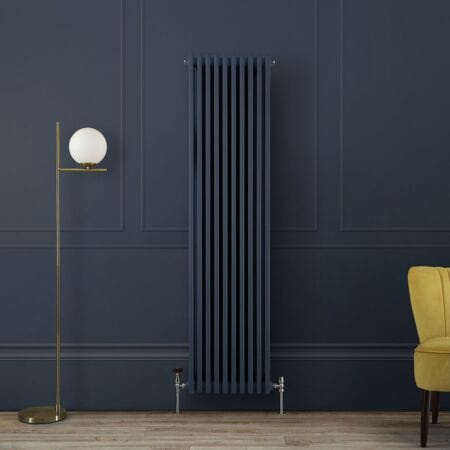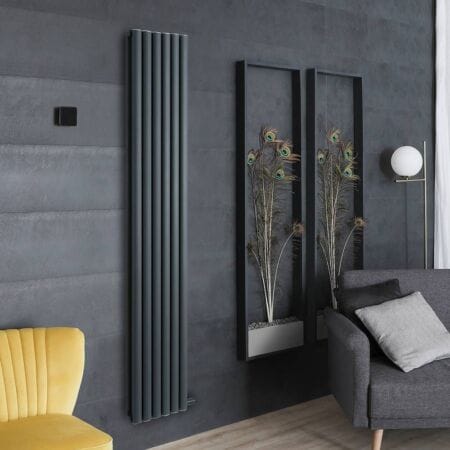Contents
ToggleWhat we'll cover...
Some of the easiest means to keep warmth within a household for maximum efficiency.
Best practices to keep hold of household heat
When winter rolls in and your heating bills start climbing faster than a squirrel up a bird feeder, it’s time to think seriously about insulation. No matter how efficient your heating system is, if your home leaks heat like a sieve, you’re essentially throwing money out of the window, almost literally. But fear not! This guide will walk you through the best ways to keep your home toasty, cut energy waste, and lower your bills with the best heat retention tips around.
Because, let’s be honest – nobody really wants to spend their evenings wrapped in three jumpers and two blankets for extra warmth just to keep the heating bill down.
Why insulation is key to an energy efficient home
Insulation is the unsung hero of home heating. While a high quality radiator or underfloor heating system does the heavy lifting, proper insulation makes sure that warmth stays where it belongs – inside your home, not escaping through the walls, windows and doors like a heat-seeking missile. It really is one of the key elements for a successful heat retention strategy.
A well-insulated home doesn’t just save you money; it reduces your carbon footprint, keeps temperatures consistent, and means you don’t have to crank up the heating every five minutes. In other words, insulation is like a gigantic warm jumper for your house – wrap it up properly, and you’ll feel the benefits. Think of it as the difference between wearing a thick winter coat or just braving the cold in a T-shirt because “it didn’t feel that bad at first.”
Without insulation, heat escapes rapidly, so let’s explore the best ways to keep your home snug and your wallet fatter than Santa Claus.

Factors affecting heat output: Room size, windows and insulation
Different parts of your home require different insulation solutions for heat retention. Put simply, if your walls aren’t insulated, it would be like wearing a woolly hat but forgetting to zip up your coat. And if your windows are draughty, well…that’s like leaving your coat unbuttoned in a snowstorm. Here’s a quick breakdown of the best materials to use:
Walls
Windows and external walls
- Cavity wall insulation – Ideal for homes built after the 1920s, this involves injecting insulation material into the gap between your inner and outer walls. If your home has cavity walls and they’re not insulated, you could be losing up to a third of your heat. Imagine paying for three pints and getting to drink only two. Utterly outrageous.
- Solid wall insulation – If you live in a charming but draughty older home with solid walls, internal or external insulation boards can work wonders. As an added bonus, external insulation can also freshen up your home’s appearance, which is perfect if your brickwork has seen better days.
Windows
- Double or triple glazing – If you’ve still got single-pane windows, upgrading to double or triple glazing is a game-changer. These types of windows will trap heat while reducing noise – a win-win. No more hearing every word of your neighbour’s 2AM karaoke session – “It’s me who’ll be coming in there like a wrecking ball you keep that racket up!”
- Secondary glazing – A more affordable alternative for period homes where replacing windows isn’t an option. It’s akin to putting on an extra pair of socks to heat up the rest of your body – simple, effective, and cheaper than buying a whole new wardrobe.
Floors
- Underfloor insulation – For homes with suspended wooden floors, insulation boards or mineral wool positioned beneath the floorboards can prevent heat loss and maximise heat retention. Otherwise, you might as well be heating the crawl space.
- Rugs & carpets – If full insulation isn’t an option, a thick rug will keep your feet warm and reduce heat escaping through the floor. Plus, it stops you from experiencing the toe-numbing shock of stepping onto freezing cold tiles first thing in the morning. Underfloor heating is an additional luxury option for lovely underfoot conditions.
How to draught-proof your home effectively
Draughts are sneaky little things. You might not see them, but you’ll definitely feel them. They creep in under doors, through old windows, and even around letterboxes, all with the potential to turn your home into a chilly wind tunnel as opposed to an energy efficient heating haven. Blocking draughts is one of the simplest and most cost-effective ways to improve insulation and enhance heat retention.
Where to look
- Doors & windows – Add weatherstripping or self-adhesive draught excluders. If your windows rattle every time the wind blows, it’s probably time for some reinforcements.
- Floorboards & skirting boards – Gaps in the floorboards might add “rustic charm,” but they also let cold air in. Use flexible filler to seal them properly.
- Fireplaces & chimneys – If you’ve got a fireplace but never use it, a chimney balloon can stop warm air from vanishing up the flue faster than a magician’s rabbit from a hat.
- Letterboxes & keyholes – Install covers to keep the cold out. Because nobody wants a mini Arctic blast every time the post arrives.
A well-sealed home means your heating system doesn’t have to work as hard – so you can stay warm without your energy bills skyrocketing.
Underfloor heating vs radiators: Which is better for heat retention?
The great debate: underfloor heating or designer radiators? Both have their merits, but when it comes to heat retention, it depends on your home setup.
Underfloor heating:
- Pros: Even heat distribution, no cold spots, works well with insulation.
- Cons: Can be expensive to install, slower heat-up time.
Radiators:
- Pros: Quick heat-up time, easy to upgrade, works well with insulation strategies like radiator reflectors.
- Cons: Can create uneven temperatures if placed inefficiently.
Of course, you need to consider the BTU output in line with room size, whichever type of heating solution you opt for, so our BTU Calculator can be key in this regard.
And if you do settle on a radiator choice, consider all the bells and whistles given the role that radiator valves can play in energy efficiency, and consider the addition of smart valves to enhance performance.
The role of thermal curtains, door seals and radiator panels
Sometimes, small changes make a big difference. If you want to boost insulation and maximise heat retention without a full-scale renovation, consider these:
- Thermal curtains & blinds – Thick, lined curtains can reduce heat loss through windows by up to 25%.
- Door seals – A simple fix that prevents warm air from escaping under doors.
- Radiator reflectors – These nifty panels sit behind radiators and reflect heat back into the room instead of letting it disappear into the wall.
Insulation = warmth + savings
At the end of the day, insulation is one of the smartest investments you can make for your home. Whether you’re adding thermal curtains, sealing draughts, or going all-in with underfloor heating, every step you take will help you stay warmer and cut down on energy waste whilst enhancing heat retention capabilities, even more so when using heating at the best times for maximum efficiency. So wrap up your home just like you would yourself on a frosty morning – because a well-insulated house is a happy (and toasty) one!
For any further hints and tips on how to properly insulate your home, don’t hesitate to get in touch with us via the comments section, or through Instagram, Facebook or X.
John is a Research Specialist for the Best Heating Advice Centre, where for over nine years he has dedicated himself to demystifying home heating for our customers. He specialises in creating clear, data-driven guides and how-to articles by collaborating directly with our team of certified heating experts and product engineers.
His work, built on a foundation of journalistic research, has helped millions of readers make confident and informed decisions about their home heating. When he’s not breaking down the heat output differentials from radiators to heated towel rails, John fancies himself as a fine football and music connoisseur.






